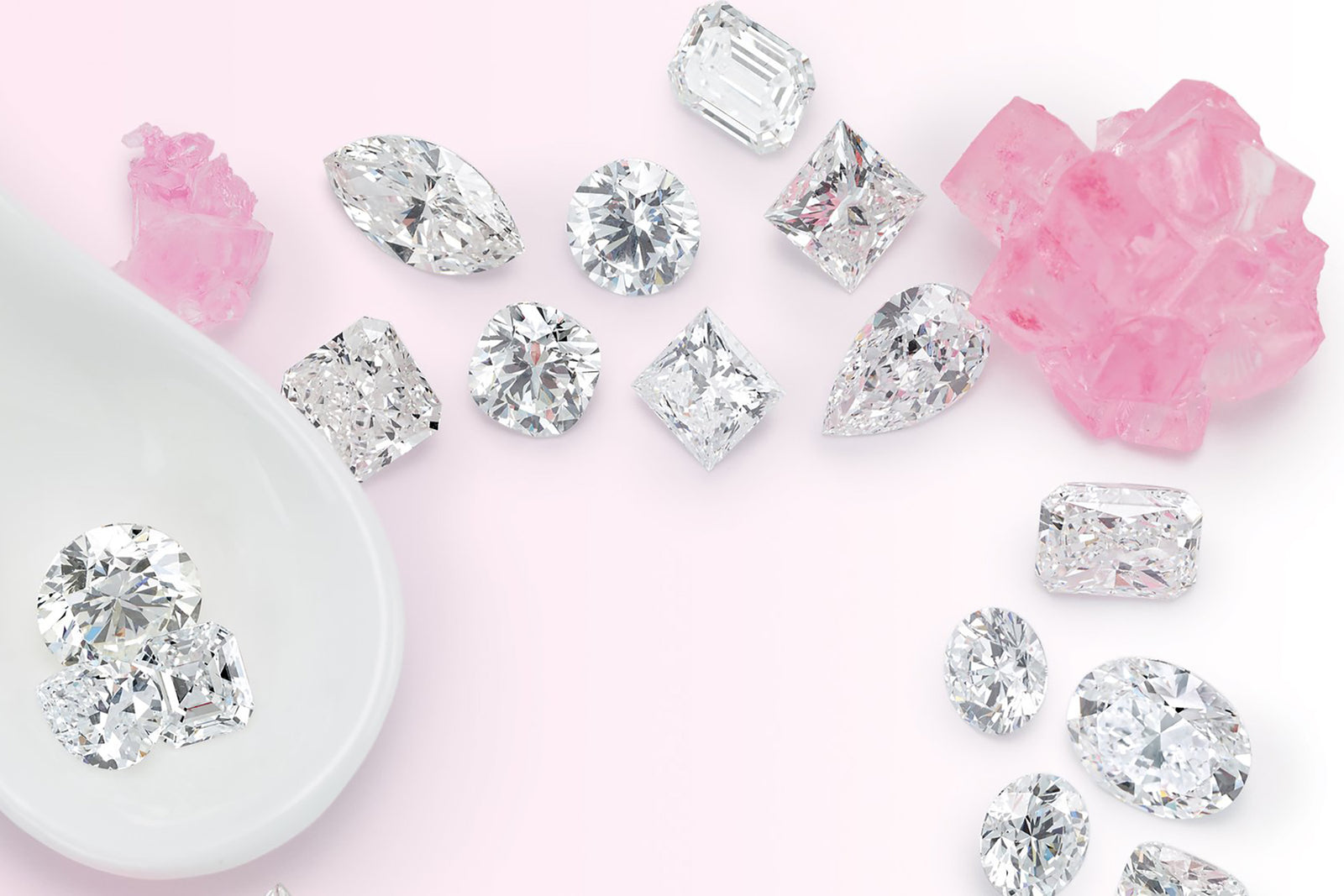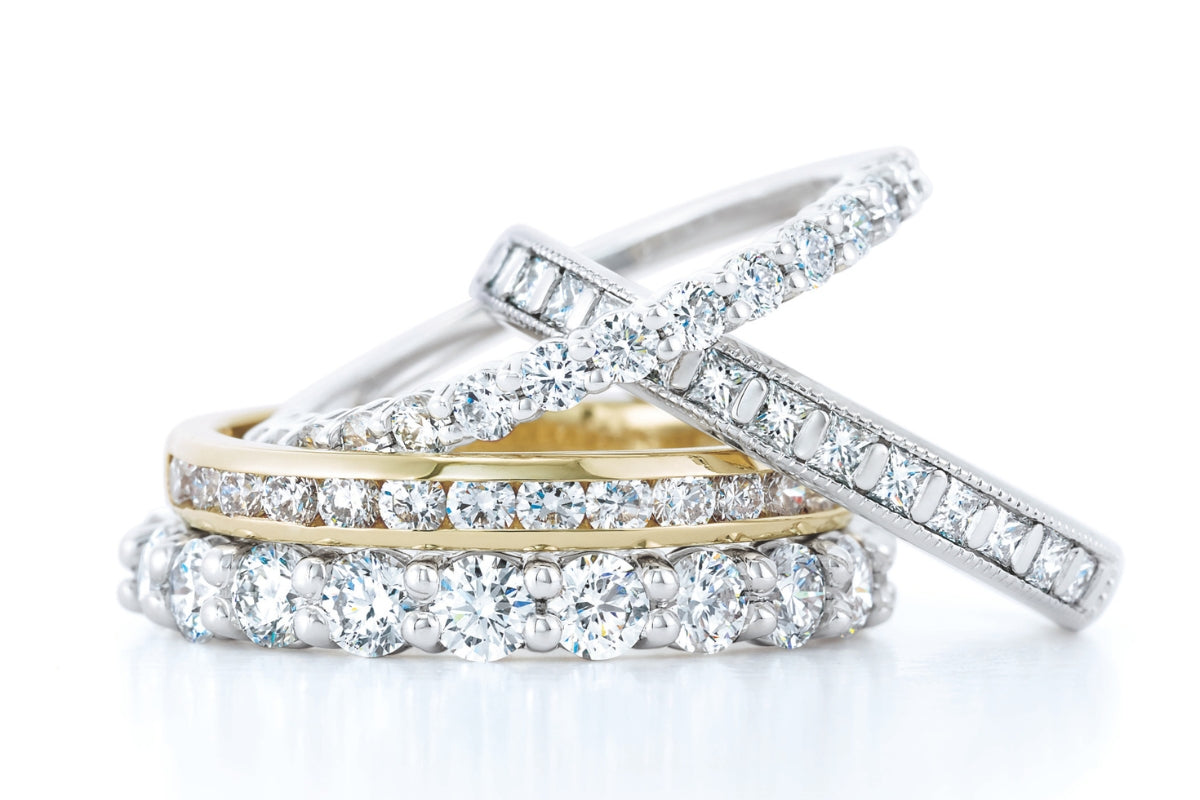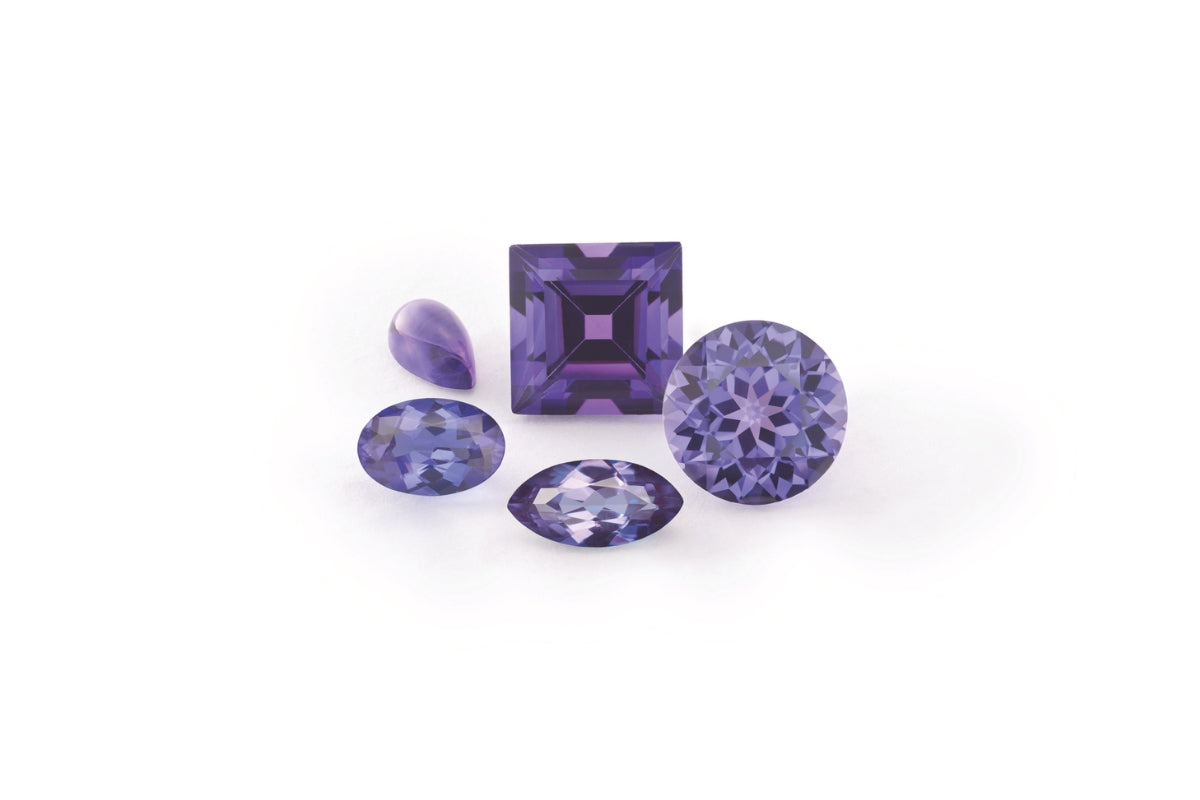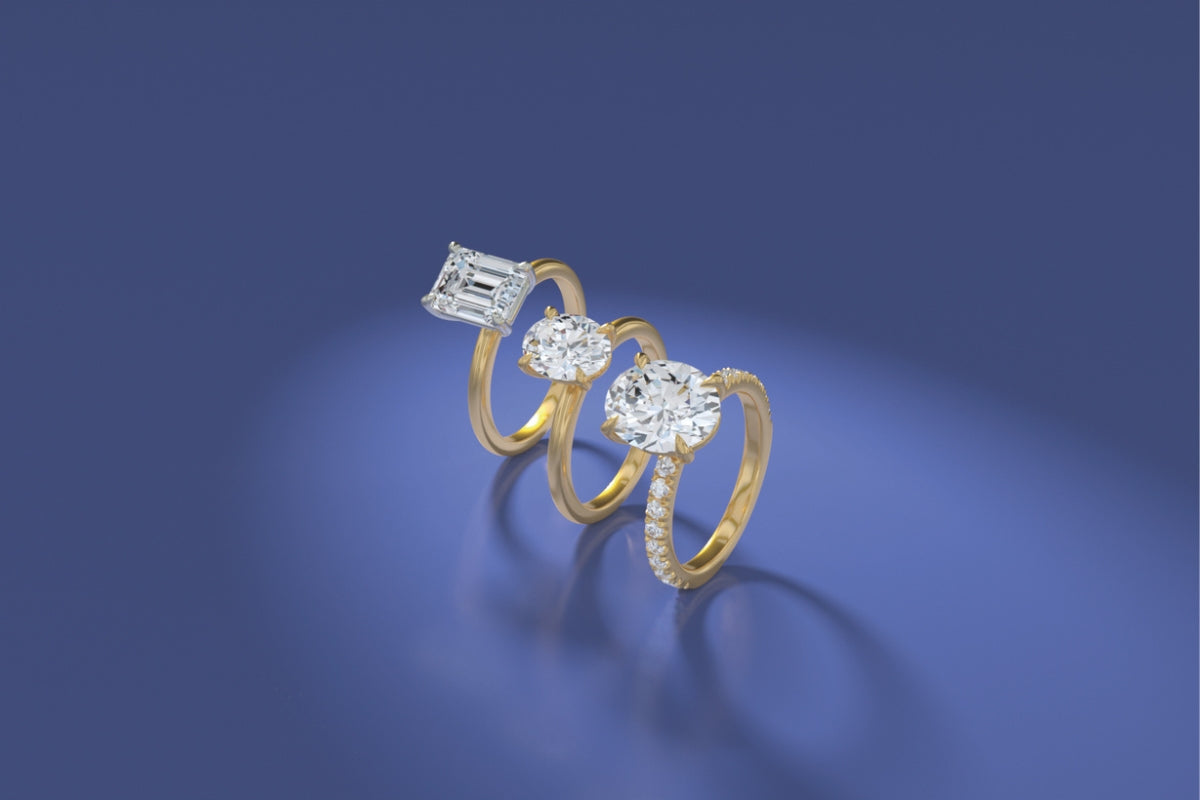So what is “clarity” and why is it a part of the 4 C’s? Clarity is graded by the lack of clarity characteristics (blemishes and inclusions) commonly found in diamonds and their overall effect on the beauty of the diamond. It’s an important element of the overall 4 C’s because rarity and value are related and a diamond with fewer clarity characteristics is much more rare, and therefore, more valuable.
Generally, clarity characteristics can be small crystals trapped during growth, fractures, irregularities in its atomic structure, growth remnants, and so on. Clarity characteristics can even be formed during or after the growth, processing, cutting, or general mishandling or abuse.
The GIA clarity scale goes from Flawless (F) to Included 3 (I3).

Courtesy of GIA
There are two types of clarity characteristics.
- An inclusion is “internal” and contained completely inside the diamond or they might extend into the diamond from the surface of the stone.
-
A blemish is on the “outside” (surface) of the diamond and does not penetrate into the diamond. Among other types, scratches and nicks are common examples of blemishes. Blemishes rarely impact a diamonds clarity grade below internally flawless (IF).
Most of the time, clarity characteristics don’t pose a threat to the integrity of the diamond. Generally, if a diamond has durability issues, it won’t survive the cutting process, due to the friction and pressure the diamond is subjected to.
I can’t think of any other consumer good that’s scrutinized to this magnitude. Can you? Just imagine purchasing a home or car under such magnification! That would not only be time consuming, but a mentally exhausting process to differentiate such big life purchases. But in the world of diamonds, a gemological grading report outlines the 4 C’s in a similar way to a home inspection or a vehicle history report. It tells us, the jeweler, what exactly we’re offering our clients. It tells you, the shopper, what exactly you are buying and how its price is justified. Similar to homes and cars, no two diamonds are alike. On paper, they all may have similar “specs,” but their unique combination of characteristics are what define the rarity and therefore, value.




